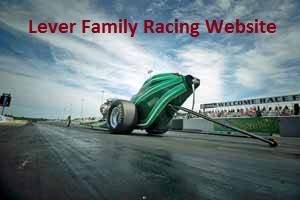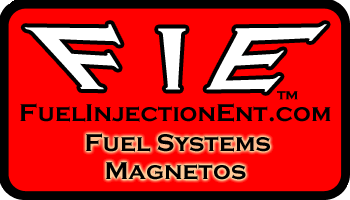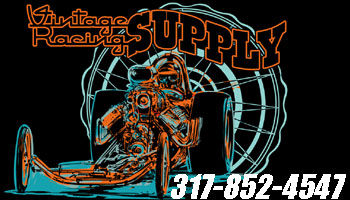1
Front Engine Dragsters / Re: The boys from Kansas are at it again
« on: March 27, 2015, 12:49:52 AM »
Andy, the outrage has happened several times. First with Jim and Stacy Paul's Buick heads that were not legal until a lawsuit was threatened. Goodguys took out OEM in their rule book which allowed the heads and then opened the door for the SBC 14 degree New Zealand heads. Somewhere in the mix the RR 23 degree head came along, although the New Zealand heads ran away with the class. This resulted in dwindling car count and a split of the class into A and B fields with near total demise of the standard 23 degree SBC head that the class started with. Back in the mid 90s there were close to 30 Junior Fuelers at any given race, and it was second only to N/TF which had as many or more cars as well.
Many of the things you mentioned regarding weight were true in the early days with the SBC being lighter when using a stock 400 block and bowtie heads against the heavier early hemi making more HP. The wins were split fairly evenly between the two. The scarcity of the 400 blocks being replaced by heavier aftermarket blocks with increasing safety rules diminished the SBC weight advantage. Surprisingly, the early hemi combination is not quite as heavy as it looks when a little lightening effort is put into play, and certainly within reason to obtain the weight break for a 400 + cubic inch combination most people are running.
As for your other points, 16:1 compression may be obtainable, but is not necessarily the norm, and with todays cams it is no harder with a hemi than it is with a SBC. Having been involved with both an early hemi and a SBC, the flame propagation problems you mention are news to me. I've read about them on the internet, but have not seen any evidence of it in practice. Additionally, for the SBC heads, the availability is limited in the aftermarket, and the design is still based on a standard SBC inline wedge, which dictates a smaller valve area due to the smaller bore spacing and valve alignment. 370 cfm is about as high as I've ever seen in 23 degree RR head.
Also, understand that most of the nostalgia racers are racing on a budget that pales in comparison to those that are chasing the index advantage in Competition Eliminator. Ironically, that was another source of outrage when NHRA created comp nostalgia dragster classes. There were no high dollar pro built motors until NHRA's involvement. A top notch SBC can be built by a knowledgeable racer with about $25,000 to $30,000 in hard parts alone. Considering the lack of tech in other combinations, and the budget minded racers involved, the SBC is the go to engine of choice without much consideration of its shortcomings when compared with the glaring loopholes in the rules.
Considering our Junior Fueler was originally built for an early hemi, we'll gladly take on a partner willing to provide us with one of these killer $80,000 hemi's, and dump our $20,000 boat anchor ... lol. I have full confidence in our tuning ability, so we would certainly be a player. Scott and Frank are good friends and are only about four hours away, so show us the money!!

Many of the things you mentioned regarding weight were true in the early days with the SBC being lighter when using a stock 400 block and bowtie heads against the heavier early hemi making more HP. The wins were split fairly evenly between the two. The scarcity of the 400 blocks being replaced by heavier aftermarket blocks with increasing safety rules diminished the SBC weight advantage. Surprisingly, the early hemi combination is not quite as heavy as it looks when a little lightening effort is put into play, and certainly within reason to obtain the weight break for a 400 + cubic inch combination most people are running.
As for your other points, 16:1 compression may be obtainable, but is not necessarily the norm, and with todays cams it is no harder with a hemi than it is with a SBC. Having been involved with both an early hemi and a SBC, the flame propagation problems you mention are news to me. I've read about them on the internet, but have not seen any evidence of it in practice. Additionally, for the SBC heads, the availability is limited in the aftermarket, and the design is still based on a standard SBC inline wedge, which dictates a smaller valve area due to the smaller bore spacing and valve alignment. 370 cfm is about as high as I've ever seen in 23 degree RR head.
Also, understand that most of the nostalgia racers are racing on a budget that pales in comparison to those that are chasing the index advantage in Competition Eliminator. Ironically, that was another source of outrage when NHRA created comp nostalgia dragster classes. There were no high dollar pro built motors until NHRA's involvement. A top notch SBC can be built by a knowledgeable racer with about $25,000 to $30,000 in hard parts alone. Considering the lack of tech in other combinations, and the budget minded racers involved, the SBC is the go to engine of choice without much consideration of its shortcomings when compared with the glaring loopholes in the rules.
Considering our Junior Fueler was originally built for an early hemi, we'll gladly take on a partner willing to provide us with one of these killer $80,000 hemi's, and dump our $20,000 boat anchor ... lol. I have full confidence in our tuning ability, so we would certainly be a player. Scott and Frank are good friends and are only about four hours away, so show us the money!!







